Introduction
Chilled daikon radish strips, often referred to as muwoo-muchim in Korean cuisine or daikon sashimi in Japanese dishes, are a refreshing, crunchy, and versatile side dish that elevates any meal. This humble root vegetable, known for its mild, slightly peppery flavor and high water content, transforms into a delicate, cooling appetizer or accompaniment when prepared correctly. Whether served alongside grilled meats, as part of a summer salad, or as a standalone snack, chilled daikon radish strips offer a burst of freshness that tantalizes the palate. This article will guide you through the process of creating these elegant strips, from selecting the perfect daikon radish to mastering the techniques that ensure maximum crispiness and flavor. Along the way, we’ll explore the cultural significance of this dish, its health benefits, and creative variations to suit every taste.
The Humble Daikon Radish: A Culinary Chameleon
Daikon radish (Raphanus sativus var. longipinnatus) is a staple in Asian cuisines, prized for its versatility and ability to absorb flavors while retaining its signature crunch. Native to East Asia, this root vegetable is cultivated worldwide and goes by various names, including white radish, Japanese radish, and Chinese radish. Its mild, sweet flavor profile makes it an ideal canvas for both savory and sweet preparations, from pickles and stews to stir-fries and salads.
The daikon’s high water content (approximately 95%) contributes to its refreshing texture, which becomes even more pronounced when chilled. When sliced into thin strips and marinated lightly, the vegetable’s natural sweetness emerges, balanced by a subtle tanginess that awakens the senses. Beyond its culinary appeal, daikon radish is a nutritional powerhouse, rich in vitamin C, fiber, and antioxidants, making it a healthy addition to any diet.
Selecting the Perfect Daikon Radish
The foundation of exceptional chilled daikon radish strips begins with selecting the finest specimen. When shopping for daikon, look for firm, unblemished roots with smooth, vibrant skin. Avoid radishes with soft spots, cracks, or signs of wilting, as these indicate age or improper storage. The ideal daikon should feel heavy for its size, a testament to its moisture content.
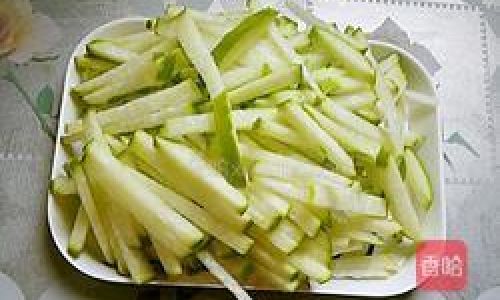
In many Asian markets, daikon radishes are sold in varying sizes, from petite 6-inch roots to massive 2-foot giants. For this recipe, a medium-sized daikon (approximately 12–15 inches long and 3–4 inches in diameter) strikes the perfect balance between manageability and yield. Smaller radishes may be more tender but require careful handling to avoid bruising, while larger ones might have a slightly woodier core.
Equipment and Tools
Creating flawless chilled daikon radish strips requires minimal specialized equipment, but a few key tools will streamline the process:
- Sharp Chef’s Knife or Mandoline Slicer: For slicing the daikon into uniform strips. A mandoline ensures even thickness, while a sharp knife allows for greater control.
- Cutting Board: Opt for a large, stable board to prevent slippage.
- Mixing Bowls: One for salting the radish and another for marinating.
- Colander or Sieve: For draining excess moisture.
- Clean Kitchen Towels or Paper Towels: For patting the radish dry.
- Refrigerator-Safe Container: To chill the finished dish.
Ingredients: Simplicity Meets Elegance
The beauty of chilled daikon radish strips lies in their minimalist ingredient list, which allows the vegetable’s natural flavor to shine. For a classic preparation, gather the following:
- 1 medium daikon radish (approximately 1.5–2 pounds)
- 1 tablespoon kosher salt (for drawing out moisture)
- 1 teaspoon sugar (optional, to balance flavors)
- 2 tablespoons rice vinegar (or apple cider vinegar for a milder tang)
- 1–2 teaspoons sesame oil (toasted, for nutty depth)
- 1 teaspoon sesame seeds (toasted, for garnish)
- Optional add-ins:
- Red pepper flakes (for heat)
- Grated ginger (for zing)
- Sliced green onions (for freshness)
- Honey or mirin (for sweetness)
Step-by-Step Preparation
Preparing the Daikon Radish
Begin by trimming the daikon. Use a sharp knife to slice off the root end and the leafy top, leaving a clean, cylindrical shape. Peel the radish using a vegetable peeler or a knife, removing the tough outer skin to expose the crisp, white flesh beneath. Some recipes advocate leaving the skin intact for added texture, but peeling ensures a uniform, delicate bite.

Slicing Techniques: Uniformity is Key
The goal is to create thin, even strips that maximize surface area for marinating while retaining their crunch. Here are two methods:
- Julienne Cut: Slice the daikon into 2-inch segments, then cut each segment into 1/8-inch-thick planks. Stack the planks and slice lengthwise into matchsticks.
- Mandoline Method: Adjust the mandoline to a 1/8-inch setting and slide the daikon across the blade, applying gentle pressure. This method yields perfectly even strips in minutes.
Regardless of the technique, aim for strips that are approximately 2–3 inches long and 1/8-inch thick. Thicker strips may remain too crunchy, while thinner ones risk becoming soggy.
Salting: The Secret to Crispiness
Salting is a critical step that draws out excess moisture from the daikon, intensifying its flavor and ensuring a crisp texture. Place the sliced radish in a large mixing bowl and toss gently with kosher salt. Use your hands to distribute the salt evenly, massaging the strips lightly. Let the radish sit for 15–20 minutes. During this time, you’ll notice beads of liquid forming on the surface—this is the moisture being expelled.
Rinsing and Draining
After salting, rinse the daikon thoroughly under cold running water to remove excess salt. Transfer the strips to a colander and let them drain for 5–10 minutes. To expedite the process, gently press the radish with your hands or pat it dry with a clean kitchen towel. Avoid squeezing too vigorously, as this may bruise the strips.
Marinating: Balancing Flavors
In a clean mixing bowl, combine the drained daikon strips with rice vinegar, sugar (if using), sesame oil, and any optional add-ins. Toss gently to coat the strips evenly. The vinegar adds a bright acidity, while the sugar (if desired) rounds out the flavors. Sesame oil imparts a subtle nutty aroma, elevating the dish’s complexity.

For a twist, experiment with flavored vinegars (such as yuzu or cherry blossom) or infuse the marinade with herbs like cilantro or mint. The key is to keep the seasoning light to avoid overwhelming the daikon’s delicate taste.
Chilling: Letting the Flavors Meld
Transfer the marinated daikon strips to a refrigerator-safe container and chill for at least 30 minutes, though 1–2 hours is ideal. Chilling not only enhances the dish’s refreshing quality but also allows the flavors to meld harmoniously. For optimal texture, avoid freezing the radish, as this will compromise its crispness.
Serving and Garnishing
Just before serving, give the chilled daikon strips a final toss to redistribute the marinade. Transfer them to a serving platter or individual bowls and garnish with toasted sesame seeds, a sprinkle of red pepper flakes, or a drizzle of sesame oil. For a visual contrast, add a few edible flower petals or microgreens.
Chilled daikon radish strips pair beautifully with grilled proteins, sushi, or fried rice. They also shine as a standalone appetizer, accompanied by a dipping sauce of soy sauce, rice vinegar, and a touch of chili paste.
Troubleshooting Common Issues
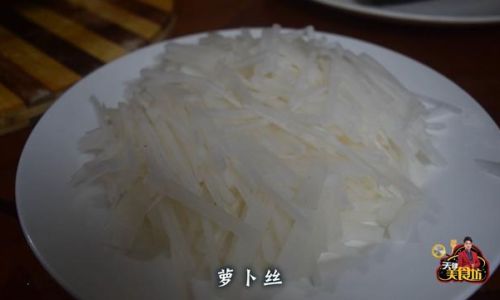
- Soggy Texture: Over-salting or insufficient draining can lead to mushy strips. To prevent this, rinse the radish thoroughly after salting and pat it dry before marinating.
- Overly Salty Flavor: If the dish tastes too salty, rinse the strips again under cold water and adjust the marinade with a pinch of sugar or a splash of vinegar.
- Blandness: Boost the flavor by adding a touch of freshly grated ginger, a squeeze of lime, or a sprinkle of toasted sesame seeds.
Creative Variations
- Spicy Daikon Strips: Mix 1 teaspoon of gochugaru (Korean chili flakes) into the marinade for a fiery kick.
- Sweet and Sour Daikon: Add 1 tablespoon of honey or mirin to the vinegar for a balanced sweetness.
- Herb-Infused Daikon: Toss the strips with chopped cilantro, basil, or mint before serving.
- Daikon “Noodles”: Use a spiralizer to create daikon noodles and serve them chilled with a peanut sauce.
Cultural Significance and Health Benefits
In Korean cuisine, chilled daikon radish strips (muwoo-muchim) are a staple banchan (side dish), often served alongside barbecue to cleanse the palate. In Japan, daikon oroshi (grated radish) is a traditional condiment paired with sashimi or tempura. Beyond its culinary roles, daikon radish has long been revered in traditional medicine for its digestive benefits and detoxifying properties.
Nutritionally, daikon is low in calories and high in fiber, making it an excellent choice for weight management. Its vitamin C content supports immune health, while enzymes like diastase aid in digestion.
Conclusion
Chilled daikon radish strips are a testament to the beauty of simplicity in cooking. With just a handful of ingredients and mindful preparation, this humble root vegetable becomes an elegant dish that delights the senses. Whether you’re a seasoned home cook or a curious novice, mastering this recipe opens the door to endless culinary possibilities. Experiment with flavors, textures, and presentations to make this dish your own—and savor the crisp, refreshing results.
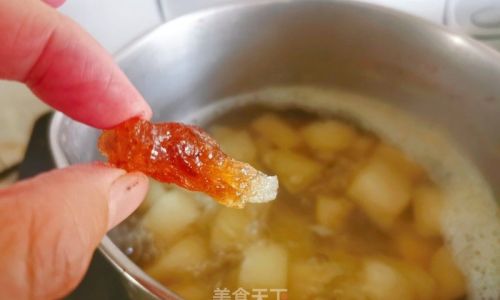

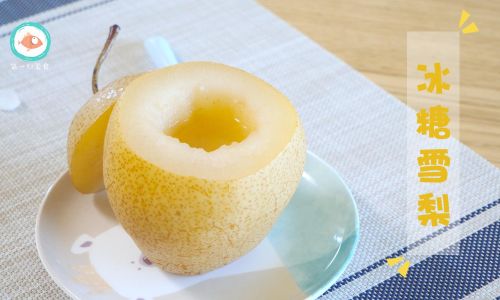
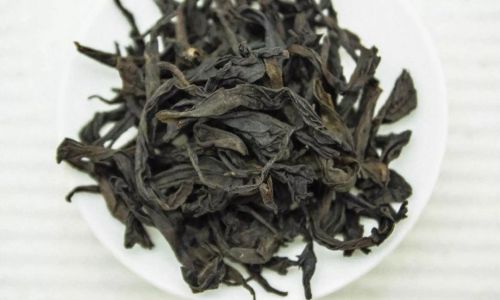
0 comments